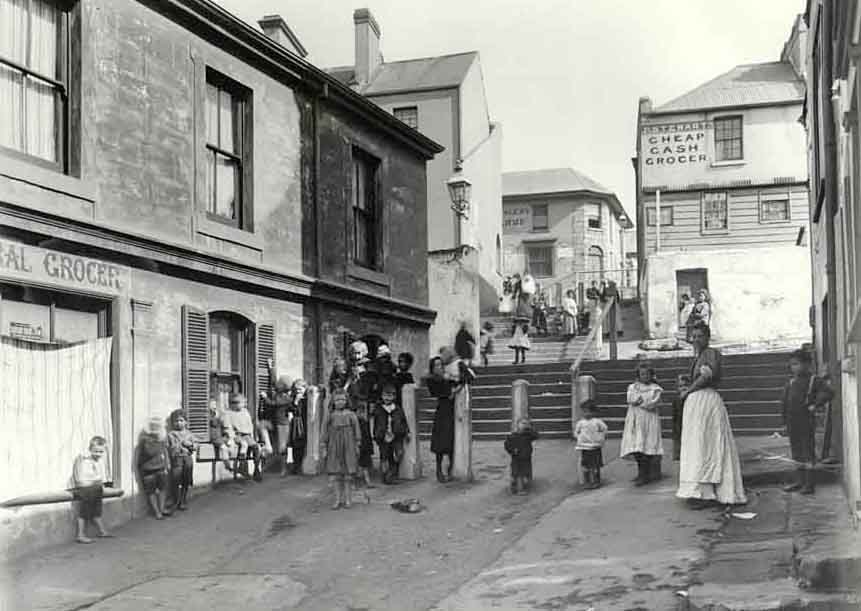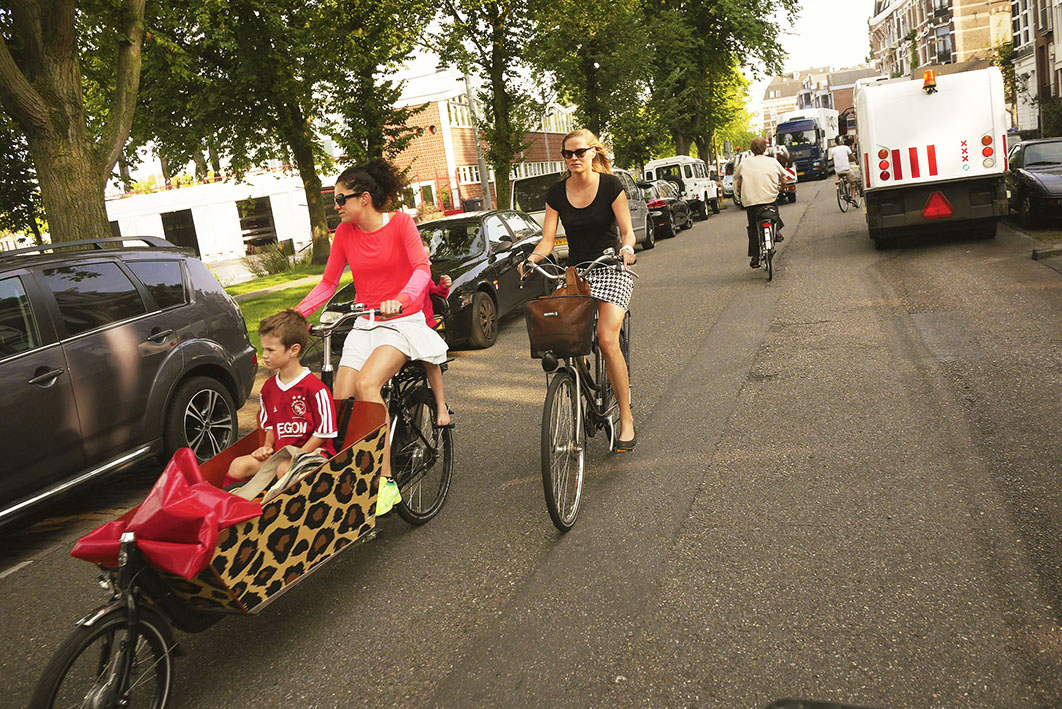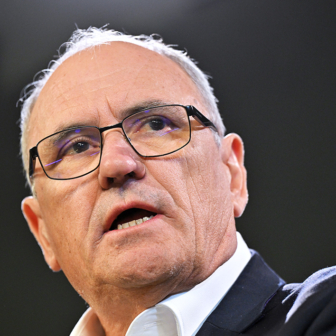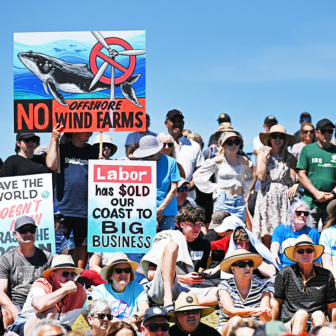What do you see when you look out your front door? It’s probably a street, and on that street cars are likely to have right of way over any other form of movement. If you want to leave your house, you’re going to need to negotiate around these cars. And if you have a small child with you, you’ll need to pay special attention, holding their hand tight, lest they run on to the street and risk being killed or seriously injured.
This small child doesn’t know that the street out the front of their house is, potentially, a very dangerous place. A very dangerous place: the street outside is something all parents take great care to teach their children to be wary of: never to linger on, never to cross without an adult. Remember: Look right, look left, look right again.
Luckily, pedestrian fatalities in Australia are slowly decreasing. In 1998 398 pedestrians died, but by 2018 the number had fallen to 177, though this past decade the figure has remained pretty steady. Worldwide, some 270,000 pedestrians are killed each year on roads, and this number also shows a downward trend over time.
So are our streets becoming less dangerous to walk on? Not necessarily. While safety improvements might have been made to your street in recent years, many transport studies also show declines in pedestrian mobility, especially among young children.
When quizzed on these trends, close to 70 per cent of parents in New South Wales said there’s too much traffic on the roads for their children to walk safely to school in the morning. Many parents of small children will bundle them into the car instead — much safer.
Dutch authors Thalia Verkade and Marco te Brömmelstroet are bothered by facts like these. In their new book Movement: How to Take Back Our Streets and Transform Our Lives they call for a radical rethink of our streets and the role they play in our lives.
Verkade and te Brömmelstroet lead with a series of provocations: Why do we think about streets first and foremost as places to move from A to B? Why does the need for speed and efficiency triumph over other kinds of uses? And do we even know how to imagine alternatives?
Questions like these hadn’t occurred to Verkade, a Rotterdam-based journalist, until she met te Brömmelstroet, otherwise known as “the Cycling Professor,” at the University of Amsterdam. On assignment to write a series on bicycle superhighways, Verkade’s interview with te Brömmelstroet completely upended how she thought about streets, inspiring the three-year journey of discovery recounted in Movement.
Be warned, she writes, “Read this book and you might never look at the street outside your front door in the same way again.”
The cars that ate Paris — and Los Angeles, Sydney and Delhi too
It’s hard to overestimate how radically the automobile has transformed how we live together in communities. With its mass adoption across developed nations in the twentieth century came the wholesale reconstruction of city neighbourhoods.
The principle of circulation took hold: looking down on Manhattan in the 1930s from his privileged view in an aeroplane, Le Corbusier was struck by a vision of the city as a body in need of fluidity of movement. He called motor cars “machines of circulation” and likened roads to human arteries, promoting flow and reducing stagnation. Instead of crooked laneways and dense housing, motorways were built to clear congestion and connect far-flung suburbs.

Before the transformation: Cumberland Place, The Rocks, in 1901. Rocks Resumption photographic survey/Museums of History NSW
Life on city streets changed. Playing on the street became more dangerous as more and more people drove cars. Whole neighbourhoods were demolished to make way for new road networks. Kids learned to play elsewhere.
Some communities fought back. Most famously, a Canadian journalist who had moved her family to Manhattan in the early 1950s, resisting the pull of low-rise suburbia in favour of cheaper inner-city housing and street buskers, found herself leading a community campaign to stop the demolition of her local park, Washington Square. Describing her alarm at its proposed replacement with a sunken expressway, Jane Jacobs called on her mayor to champion “New York as a decent place to live, and not just rush through.”
Jacobs would go on to lead a successful ten-year battle to save the park and the surrounding Greenwich Village, inspiring community campaigns across the world. In Amsterdam, Verkade and te Brömmelstroet write, a mass campaign of tactical resistance from community and activist groups prevented the demolition of the city centre to make way for a new road network.
Similar campaigns occurred in Australia in the late 1960s and 1970s as well, with new alliances forged in places like inner Sydney between working-class unions, student groups, environmentalists and historical preservation societies, united in their fight against proposed new motorways.
Like Jacobs, people wanted places to live, not places to rush through. The communities saved by these activist campaigns are now highly valued tracts of real estate. People love to live in places like Greenwich Village, Verkade and te Brömmelstroet’s Amsterdam, and Fitzroy, Surry Hills and Potts Point because they are walkable, loveable, liveable.
But as iconic as these campaigns to “save our streets” were, the reality is that the majority of Australian, North American and European cities were completely redesigned around the needs of the motor car. After the campaign to save Washington Square, the number of cars on roads doubled every ten years until the end of the 1970s. Ownership then accelerated even faster, until the world hit one billion registered vehicles in 2011 — one vehicle per every seven people in the world.
Those who studied the impact of motorways came to realise that the more roads you built, the more people expected to be able to drive — generating what’s called “induced demand.” If you keep on building more and more roads, people will drive more. In Australia we now have over twenty million cars for just over twenty-six million people, among the highest rate of car ownership in the world.
The next billion cars on this planet won’t take too long: it’s predicted there will be two billion cars on the roads by 2030, driven by rapid rates of motorisation sweeping across the developing world. Like first world cities, cities of the developing world are rapidly expanding their road networks to make way for floods of new cars, ushering in a tsunami of new infrastructure projects. Some twenty-five million new kilometres of roadway is expected to be laid by mid-century, a 60 per cent expansion from 2010.
At this rate, we’re careering headlong into a future of planetary-scale bitumen and concrete.
Can we imagine anything different?
If you want to see how cities could work without relying on a car to get around, visit the Netherlands, home to the writers of Movement, where a quarter of all trips are by bike. You can find more than 37,000 kilometres of cycle paths here, many of them segregated, as well as a network of bicycle “super highways” connecting towns and cities built in recent years.
This is the place where urban designers come to study how streets could work differently — not primarily for motor cars but for cyclists. Here you can find streets where cycle lanes run up the centre and cars are relegated to side lanes, where intersections like the “chips cone” assist cyclists riding together in large volumes. Sensors on traffic lights prioritise cyclists’ movement in wet weather.
But even the Dutch don’t quite have it right. Despite the investment in infrastructure, they still experience high casualty rates on roads. In 2021 a third of all road fatalities involved cyclists. This reflects the high rates of cycling in general, of course, but also shows that helping cyclists move more efficiently and across greater distances doesn’t always mean safe streets. In fact, as mobility diversifies to take in new kinds of vehicles like e-scooters and e-bikes, cycle paths themselves are also becoming more dangerous.
The authors of Movement see a big problem in valuing streets primarily for personal mobility. It turns out that even with mass investments in road networks, the average time spent travelling remains roughly the same. Why? Because greater distances also become the norm.
By prioritising investments that help us rush through, we also neglect to invest in other parts of our communities. And we neglect to account for the true costs incurred. Do we really recognise what it costs us as a society when children can’t move safely around our communities?
As much as this is a story about mobility in cities, at the heart of Movement is a call to pay attention to how decisions are being made about the street and community you live in. The message here is that how we live together in communities, and how we come to prioritise some activities over others shouldn’t be handed over to technocrats, planners, developers and politicians. We all have an interest in caring about the shared spaces in which we live.
Marco the Cycling Professor spends a lot of time campaigning for small changes to where he lives, in Ede. Why is it that a local school has prioritised a car drop-off zone but not created space for something else? How did this get to the top of the local council’s list of investments, encouraging parents to drive rather than helping them with other actions? Was it a popular vote, or did an active minority campaign for the car option when everyone else went about their lives thinking about other things? (Yes.)
Marco letter-drops the community, invites everyone to respond to the proposal, urges people to show up to the meetings. He manages to get the drop-off zone defeated.
Everyday actions can make a difference, sometimes. In Paris, mayor Anne Hidalgo has used her powers to reduce car use in the city core and plans to ban all non-residential city traffic there by 2024. Car-free zones have been created outside schools, diesel cars banned, speed limits dropped to thirty kilometres per hour, and substantial investments made in new cycle paths.
Car ownership is down to three in ten Parisians. The city is being completely reimagined as a “fifteen-minute city” prioritising access to local services over freedom of movement. Why should everyone have the right to cross the city by car whenever they want? Many other European cities are following suit.
What about Australia?
Keep spending to keep moving
Roads receive a lot of investment in Australia — collectively, it looks like we care about them a lot. In New South Wales alone, the latest budget included an $11 billion allocation for new road projects — on top of the estimated $21 billion spent on the West Connex motorway since 2015. That doesn’t include the costs of maintaining local roads, paid through council rates. In 2018–19, the national figure was as much as $8.3 billion, or an estimated half of all rates collected by local governments that year.
Massive spending like this is justified because of the way our time has come to be valued. In the field of transport economics, the value of time is expressed as a function of movement: if you are in any way held up when you are travelling to and from work in your car, then the time you are delayed is given a dollar value, multiplied by the volume of people estimated to be travelling each day for work.
On this basis, Infrastructure Australia’s Infrastructure Audit estimated the total cost of road congestion in Australia’s six largest cities to be $19 billion in 2016, expected to blow out to $39 billion by 2031. With those figures in mind, it doesn’t take long before multibillion-dollar investments to build new road infrastructure start to look kind of reasonable.
But what if we applied the “value of time” metric in other ways?
What do children sacrifice to let cars rule our streets? They lose the time they might have spent playing on the street, walking safely to a park, walking safely to school. Do we know how to value this time lost? Do we know how to cost how time spent isolated compares with time spent playing with others?
With less mobility come greater levels of obesity. A recent study by the Monash Business School Centre for Health Economics estimated the annual cost of childhood obesity in Australia at $43 million. While obesity in children is increasing for a host of reasons, one determinant is exercise. There is a cost there, being borne by children. We need to get better at valuing it.
What of other costs of car-dominated communities? There is the value of time lost when someone is killed — otherwise known as the “value of a statistical life” — which is currently $195,000 per year in Australia, or $4.5 million per death on average. In 2020, when 1106 people lost their lives due to road accidents (just over one in six were collisions between cars and cyclists or pedestrians), we can count the cost at $4.98 billion.
If you care to multiply the total number of road deaths reported in Australia between 2012 and 2021 (11,894) by the figure of $4.5 million per life lost, you’ll arrive at a figure of $53.5 billion. That’s not including the costs of serious injuries. The World Health Organization says the current global road death toll of 1.4 million per year will rise to 1.8 million by 2030. That means road traffic, judged by accidents alone, is deadlier than malaria.
There are other costs. In OECD countries, the health impacts of air pollution were estimated at US$1.7 trillion in 2010, with about half of this attributable to road transport. The evidence increasingly shows that diesel fumes increase the risk of dementia, Alzheimer’s disease and Parkinson’s disease. As research continues to show causal relationships between air pollution and human health, a bigger picture of what we are losing in cities is emerging.
Animals also suffer: some ten million are estimated to be hit on Australian roads each year. The carnage is driving some species close to extinction: recently, motor vehicle deaths were found to be the leading cause of death for the endangered Queensland cassowary, whose numbers have been reduced to a few thousand in recent years.
This is without touching on the environmental costs attached to the burning of fossil fuels, the manufacture of cars and the laying down of concrete. What is the value-of-time equation associated with how the burning of fossil fuels for transport will affect future lives?
Australians in particular are clearly being let down by allowing such a limited range of metrics to be used in such powerful ways. These metrics also miss another vital feature of public spaces — their contribution to the flourishing of individuals, communities, cities and societies. Everyday streets and public spaces are not just engineering problems to be solved, or costs to be avoided; they are also places in which social and individual benefits are realised. Can we place a dollar value on this kind of flourishing?
Ultimately, how we value our streets says a lot about how we value our time. As Annie Dillard famously wrote, “How we spend our days is, of course, how we spend our lives. What we do with this hour, and that one, is what we are doing.” No one wants to spend their life stuck in traffic, but the law of induced demand says we’re not getting that time back by spending more and more on roads. The authors of Movement have it right: it’s time to think differently about that street outside your front door. Hey, you might even like to stop and linger awhile. Why the rush? •
Movement: How to Take Back Our Streets and Transform Our Lives
By Thalia Verkade and Marco te Brömmelstroet | Translated by Fiona Graham | Scribe | $29.99 | 288 pages




